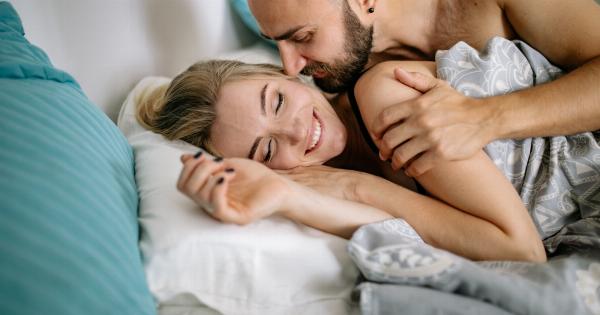Throughout history, women’s ideal body shapes have been subject to constant change and fluctuation.
From voluptuous curves to a more slender appearance, the definition of the perfect female body has evolved over time, influenced by cultural ideals, societal standards, and changing beauty trends. This article takes a deep dive into the transformation of women’s ideal body shapes from curvy to skinny, shedding light on the factors that have shaped and influenced these standards throughout the ages.
Ancient Times: Embracing Curvaceous Figures
In ancient civilizations, such as ancient Egypt and Greece, curvaceous body shapes were highly revered. The ideal woman was celebrated for her ample breasts, rounded hips, and a well-defined waist.
Artists from these eras portrayed women with voluptuous bodies in their paintings and sculptures, emphasizing their fertility and sexuality.
The Renaissance: Praiseworthy ‘Rubenesque’ Beauty
During the Renaissance period, the ideal female figure shifted towards a plumper physique, commonly referred to as ‘Rubenesque’ beauty.
Inspired by the artwork of Peter Paul Rubens, women with fuller figures were considered the epitome of beauty. A rounded belly, generous bust, and well-rounded hips were sought after, signifying wealth, good health, and fertility.
Victorian Era: Embracing Corsets and Tiny Waists
The Victorian era introduced a dramatic change in women’s ideal body shapes. A slim waist was given utmost importance, and corsets were widely used to cinch the waist to extreme proportions.
The ideal Victorian woman had an hourglass figure, where a tiny waist was contrasted by a well-rounded bust and wide hips. This was seen as a symbol of refinement, elegance, and femininity.
1920s: The Flapper Revolution and Androgynous Beauty
The 1920s brought forth a rebellion against the overly constricted and feminine beauty standards of the previous era. The Jazz Age introduced the ‘flapper’ look, which oozed confidence and independence.
The ideal body shape during this time was more boyish and androgynous, with a slim, straight figure devoid of curves. Women embraced a more athletic physique and shorter hairstyles, challenging traditional beauty norms.
Golden Age of Hollywood: The Hourglass Returns
In the 1940s and 1950s, with the rise of Hollywood glamour, the hourglass figure once again became the epitome of feminine beauty.
Iconic actresses like Marilyn Monroe and Audrey Hepburn showcased curvaceous yet slender bodies with a defined waist, voluptuous bust, and rounded hips. This ideal body shape symbolized allure, grace, and glamour.
1960s: The Twiggy Phenomenon and the Rise of Thin
The 1960s witnessed a significant shift towards a more slender and waif-like ideal body shape. British model Twiggy, known for her thin frame, took the fashion industry by storm and became the face of the ‘swinging sixties’ youth culture.
The thin, almost boyish figure with minimal curves became highly desirable, reshaping societal beauty standards.
1980s and 1990s: Supermodels and a Fitness Revolution
The 1980s and 1990s were dominated by the era of supermodels. With the rise of household names like Cindy Crawford and Naomi Campbell, the ideal body shape incorporated both slender frames and toned athleticism.
The ‘athletic but slim’ look became popularized, encouraging women to engage in fitness and maintain a lean yet muscular figure.
2000s: The Rise of Size Zero and Unrealistic Standards
The turn of the millennium witnessed a surge in pressure to attain an ultra-thin body shape. The ‘size zero’ phenomenon emerged, promoting disconcertingly underweight figures as the pinnacle of beauty.
Unattainable and unhealthy beauty standards began to take their toll on women’s physical and mental well-being, sparking debates about body image and promoting more inclusive ideals.
Present Times: Embracing Diversity and Body Positivity
In recent years, there has been a growing movement towards embracing diverse body shapes and promoting body positivity. More and more brands are challenging traditional beauty standards by featuring models of various sizes, ethnicities, and ages.
This shift is aimed at empowering women to love and embrace their unique bodies, regardless of societal expectations.
The Influence of Media and Pop Culture
The media and pop culture have played a significant role in shaping women’s ideal body shapes over time.
Through magazines, advertisements, and movies, certain body types have been celebrated and idolized, often leading to unrealistic and unhealthy beauty standards. However, increasing awareness and conversations surrounding body positivity have sparked important discussions and paved the way for a more inclusive representation of beauty.
Societal and Cultural Factors
Societal and cultural factors have also heavily influenced women’s ideal body shapes. Economic changes, social movements, and the evolving roles of women in society have all had an impact on the definition of beauty.
Different cultures around the world have their unique standards and preferences when it comes to body shapes, further highlighting the subjectivity of beauty.
Conclusion
From ancient times to the present day, women’s ideal body shapes have undergone significant transformations.
Society’s perception of the perfect female figure has been shaped by cultural influences, societal standards, and changing beauty trends. As we continue to challenge and redefine beauty norms, it is crucial to embrace diversity and foster body positivity, allowing women of all shapes and sizes to feel beautiful and confident in their own skin.































